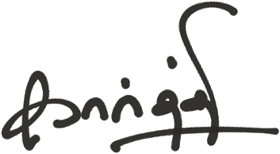Creative struggles are real.
Among all the struggles THE BLANK CANVAS is the deadliest one. From Vincent van Gogh to Ed Sheeran the concept of blank canvas has been discussed time and again. So here is my personal experience around how to deal with the blank canvas syndrome. I am no Ed Sheeran or Van Gogh but the process is the same.
Connecting dots backwards, 2020 became my lab year. At one end I had so much time saved from travel but on the other end I wasn't sure how to work within four walls and a wide open internet. I longed for such a dedicated time but now that I had it, I didn't know what to do with it.
It had to start somewhere and (yes you guessed it right), it started with a blank canvas. A number of hours was spent on starring at one. I could feel the pain of blank canvas experientially. Every time I poured out something on it, it was so awful that I closed it immediately. This happened 100+ times.
It was like opening a dirty tap. Whenever I opened it up, it was hissing, it was smelly and it threw out garbage. It was unbearable. To keep things going, I needed so much courage to keep the tap open. It took time but it did turn clean eventually. In the process, I realised that courage is not about being fearless but staying with the fear and facing it.
So here is a simple formula for clean water:
Open your dirty tap.
Collect the water. If dirty throw it out. If clean keep it.
Repeat
Keep collecting the water and keep checking. If dirty throw it out. If clean keep it. It does take time but it does turn clean. Keep it open as long as needed.
There is no way you will get the clean water without getting the dirty water out. If there is only one pipe, you have to let it out. There is no choice. The same applies to our brains as well.
A neuro take on dirty tap
Our brains are amazing goal oriented meat machines. If the goal is to write a good piece, it strives hard to get the good piece out. It really does (attention). To do the above it follows a rigid information processing loop. As a first step it connects all the obvious dots (perception) and produces the first cut.
Once the first cut is out and is fed to senses (visual, auditory etc), the information processing loop restarts. Now it tries to get the meaning out of all the dots in front (perception). It analyses the entire piece to understand the good and the bad parts (attention). It keeps the good aside and it figures out what makes the bad, bad (Decision making). It zooms in and strives to fix the bad parts piece by piece (response action). It does that for every bad piece (feedback). Finally it brings together all the parts to make it a whole.
The above process repeats till the meat machine feels it is perfect. The catch is there is no end to this information processing loop and the only way to end this loop is by cutting the feed. The process is energy intensive.
Because it is energy intensive process one or two things happen here. We get tired and we close the tap to cut the feed. On the other end we get picky and get stuck with the never ending loop. Both are detrimental for a creative. This is why we get stuck with a blank canvas (no input) or we get stuck with too many drafts (no publishing).
My take is have courage to open your dirty tap. Also have courage to close it knowing that you can always open it again. Just that you may have to keep it open for sometime to collect the dirty water but knowing that clean water will eventually come is a relief. Knowing how the information processing loop works should give you the needed courage.
To trust the creative process and stick with it long enough, all you need is courage. Keep going 🙌

